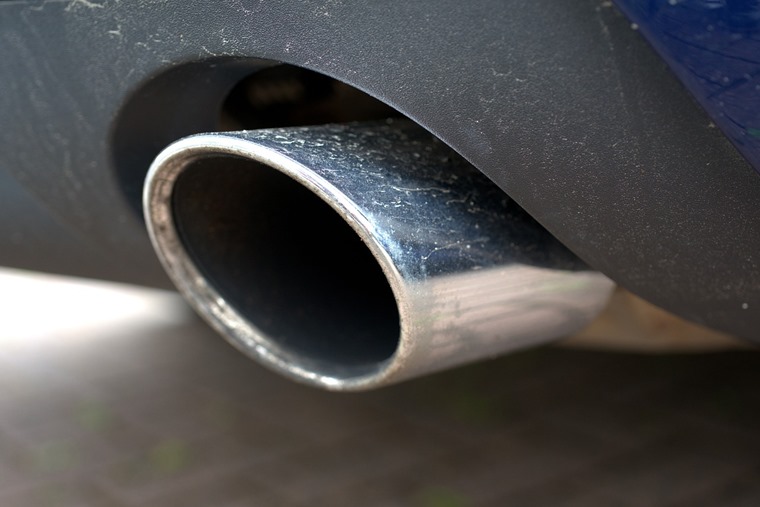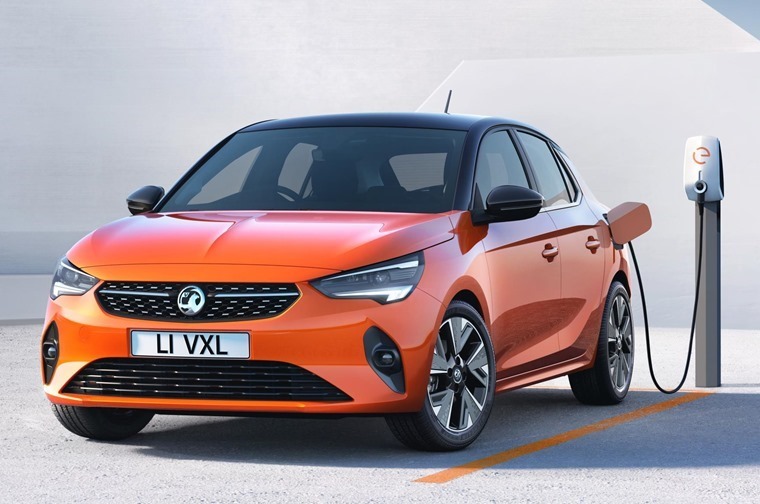Clean air zones: Locations, charges, classifications and more (Updated July 2022)
Back to 'Expert guides'If you live near a city or large town, you might be close to one of the UK’s clean air zones. Also known as low emission zones or simply CAZ, they’re becoming more popular, with local authorities aiming to cut harmful pollutants by limiting which vehicles can and cannot enter these areas.
Here’s everything you need to know about the UK’s low emission zones including locations, charges and classifications.

What are clean air zones?
Clean air zones are areas controlled by local councils that penalise the most polluting vehicles from their jurisdiction. Air pollution is linked to up to 40,000 deaths every year in the UK and, while vehicles aren’t the sole contributor, there’s no way around the fact that they have an impact – particularly older diesel models and larger commercial vehicles.
The government has therefore given local authorities the right to create the zones if traffic and pollution cannot be reduced by other means.
Their aim is to encourage drivers of more polluting vehicles to choose more eco-friendly forms of transportation. They are now in operation across several of the UK’s cities, with London taking the lead. Clean air zones run seven days a week, 24 hours a day and are enforced by automatic number plate recognition (ANPR) cameras.
Are all clean air zones the same?
In a nutshell, no they aren’t. There are currently four types of clean air zones, with three of them focusing on commercial vehicles, buses, coaches, taxis and other private hire vehicles. They are split into A, B, C and D:
| Clean air zone class | Vehicles affected |
| A | Buses, coaches, taxis, private hire vehicles |
| B | Buses, coaches, taxis, private hire vehicles, HGVs |
| C | Buses, coaches, taxis, private hire vehicles, HGVs, vans, minibuses |
| D | Buses, coaches, taxis, private hire vehicles, HGVs, vans, minibuses, cars and the option to include motorcycles |
While every clean air zone will be different, the ones that are currently in force disproportionately affect commercial vehicles and HGVs, as well as taxis and private hire vehicles. For the main part, personal cars and motorcycles are exempt and only make up part of a D class clean air zone.
What are the minimum emission standards for clean air zones?
To avoid a clean air zone charge or penalty, the above vehicles must meet the following standards for emissions:
| Vehicle type | Required standard |
| Buses, coaches, HGVs | Euro 6 |
| Vans, minibuses, taxis, private hire vehicles, cars | Euro 6 (diesel), Euro 4 (petrol) |
| Motorcycles | Euro 3 |
How do I check if I need to pay?
The government has set up an online portal that includes a vehicle checker. If you aren’t sure whether you need to pay a clean air zone charge, you’ll be able to find out if the vehicle you are travelling in is exempt – Check your vehicle here right now.

Where are the UK’s clean air zones?
Below is a definitive list of the clean air zones in the UK including those in operation and those coming soon.
Bath
Introduced in March 2021, the city centre of Bath is now a Category C clean air zone. That means buses, coaches, minibuses and vans are required to pay a charge to enter the zone if they do not conform.
| In operation | Category | Daily charge | More info |
| Now | Clean air zone C | £100 (HGVs), £9 (Vans) |
Birmingham
Birmingham introduced a clean air zone in June 2021 and, as a category D zone, it applies to personal cars too. You may want to consider getting a compliant car if you live in the Birmingham area.
| In operation | Category | Daily charge | More info |
| Now | Clean air zone D | £50 (HGVs) £9 (Cars, vans, taxis) |
Bristol
Bristol is set to introduce a clean air zone in 2022, although it’s not confirmed what category it will be yet. More info incoming.
| In operation | Category | Daily charge | More info |
| Summer 2022 | TBC | TBC |
Bradford
Bradford is set to introduce a category B clean air zone in summer 2022, with the aim of upgrading non-compliant commercial vehicles and minibuses to clean air zone standards.
| In operation | Category | Daily charge | More info |
| Summer 2022 | Clean air zone B | TBC | TBC |
Greater Manchester
Greater Manchester was poised to introduce a category C charge-based clean air zone from 30 May 2022. However, things have changed. After a negative public response, the proposals have been scrapped and replaced with a new plan for a non-charging clean air zone.
The revised plan is set to take into account people’s concerns on the rising cost of living, with many people saying that they wouldn’t have been able to afford to do business within the zone.
| In operation | Category | Daily charge | More info |
| TBC | Clean air zone C | No charge /TBC |
Leicester
Leicester has said that it wants to implement a clean air zone within the city centre area, with charges being applicable to buses, coaches and taxis. However, no official plans have been submitted and no further info is currently available.
| In operation | Category | Daily charge | More info |
| TBC | TBC | TBC | Not available |
Liverpool
Liverpool is set to launch a clean air zone in 2022, but no further information is available in terms of its categorization, charges or launch date.
| In operation | Category | Daily charge | More info |
| 2022 | TBC | TBC | https://www.liverpoolcityregion-ca.gov.uk/improving-our-air-quality/ |
London
London was the first city to operate a clean air zone, which was originally called the T-Charge. It’s now known as the ULEZ (Ultra low emission zone) and operates as a category D clean air zone. That means that non-compliant cars, bikes and vans must pay a daily charge to enter the zone.
In October 2021, the ULEZ zone was extended to encompass the complete area between the North and South circular roads.
| In operation | Category | Daily charge | More info |
| Now | Clean air zone D | £12.50 (cars, vans, motorcycles) £100 (HGVs) |
Newcastle
Newcastle was set to introduce a clean air zone I 2021, but it was delayed. A legal case against the proposal to create a category C zone are ongoing, although it is likely to be implemented soon.
| In operation | Category | Daily charge | More info |
| TBC | Clean air zone C | TBC |
Oxford
Oxford’s clean air zone is a little different to others on this list. It’s currently piloting a zero emission zone. This means that only zero-emission vehicles can enter the zone without paying a fee. It’s likely to be extended beyond the city centre in February 2022, and applies from 7am to 7pm seven days a week.
| In operation | Category | Daily charge | More info |
| Now | Zero emission zone | £2 (Ultra low emission vehicle) £4 (Low emission vehicle) £10 (All other vehicles) |
Portsmouth
Portsmouth is launching a category B clean air zone in 2021. This means the charges will apply for HGVs, buses, coaches, taxis and other private hire vehicles.
| In operation | Category | Daily charge | More info |
| 29 November 2021 | Clean air zone B | £50 (HGVs, coaches, buses) £10 (taxis, private hire vehicles) |
Scotland
Several Scottish cities will introduce a low emission zone in February 2022. Aberdeen, Dundee, Edinburgh and Glasgow are covered and, unlike other clean air zones, non compliant vehicles will not be able to pay to get in – there will simply be an exception and a fine will be sent to drivers of non-compliant vehicles.
| In operation | Category | Daily charge | More info |
| February 2022 | Low emission zone | No charge – PCNs issued to non-compliant vehicles |
Sheffield
A category C clean air zone is set to apply within the centre of Sheffield by the end of 2022.
| In operation | Category | Daily charge | More info |
| 2022 | Clean air zone C | £50 (coaches, buses, HGVs) £10 (vans, taxis) |
Which vehicles are exempt from clean air zones?
Some vehicles are exempt from clean air zones, but it’s always worth checking on the exact exemptions for each individual zone above. The most common exemptions include:
An ultra-low emission vehicle
- Disabled passenger tax class vehicles
- Military vehicles
- Historic vehicles
- Vehicles retrofitted with accredited emission-reducing technology
- Certain agricultural vehicles
- In the Greater Manchester clean air zone, there is a temporary exemption for vans that will run until the 31 May 2023.

Ready to get a low-emission vehicle?
If you’re after a vehicle that will be exempt from existing and upcoming emission zones, it’s well worth investigating plug-in hybrids and electric vehicles. Leasing is one of the most affordable and accessible ways of getting behind the wheel of a green vehicle.
Click here for deals on plug-in hybrids, or hit the button below to compare the best leasing plans on EVs.